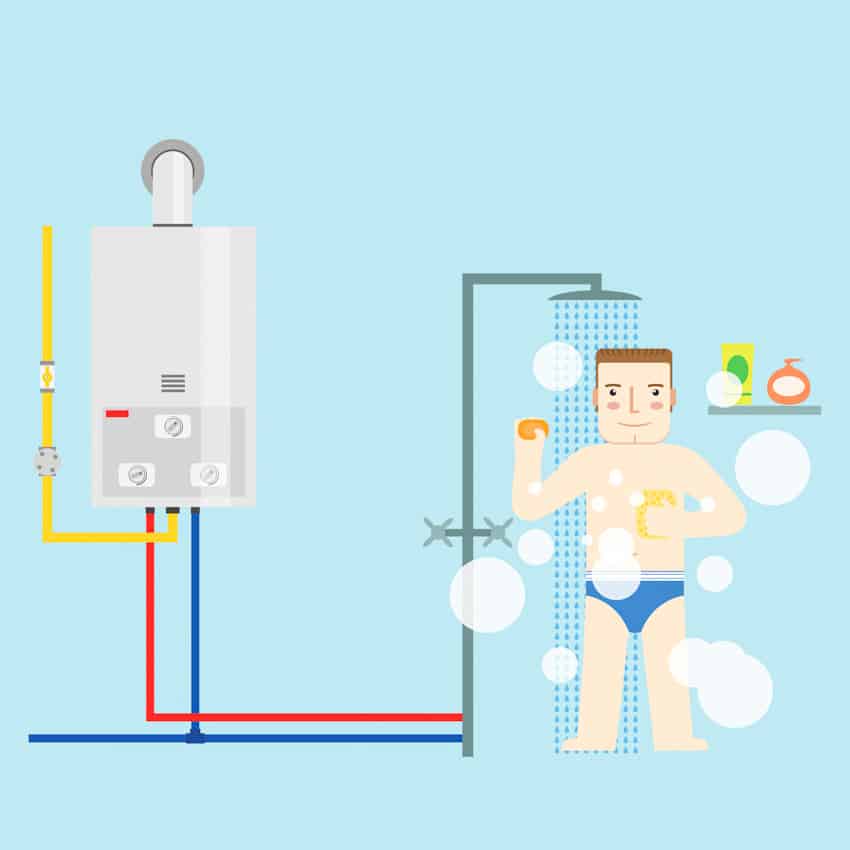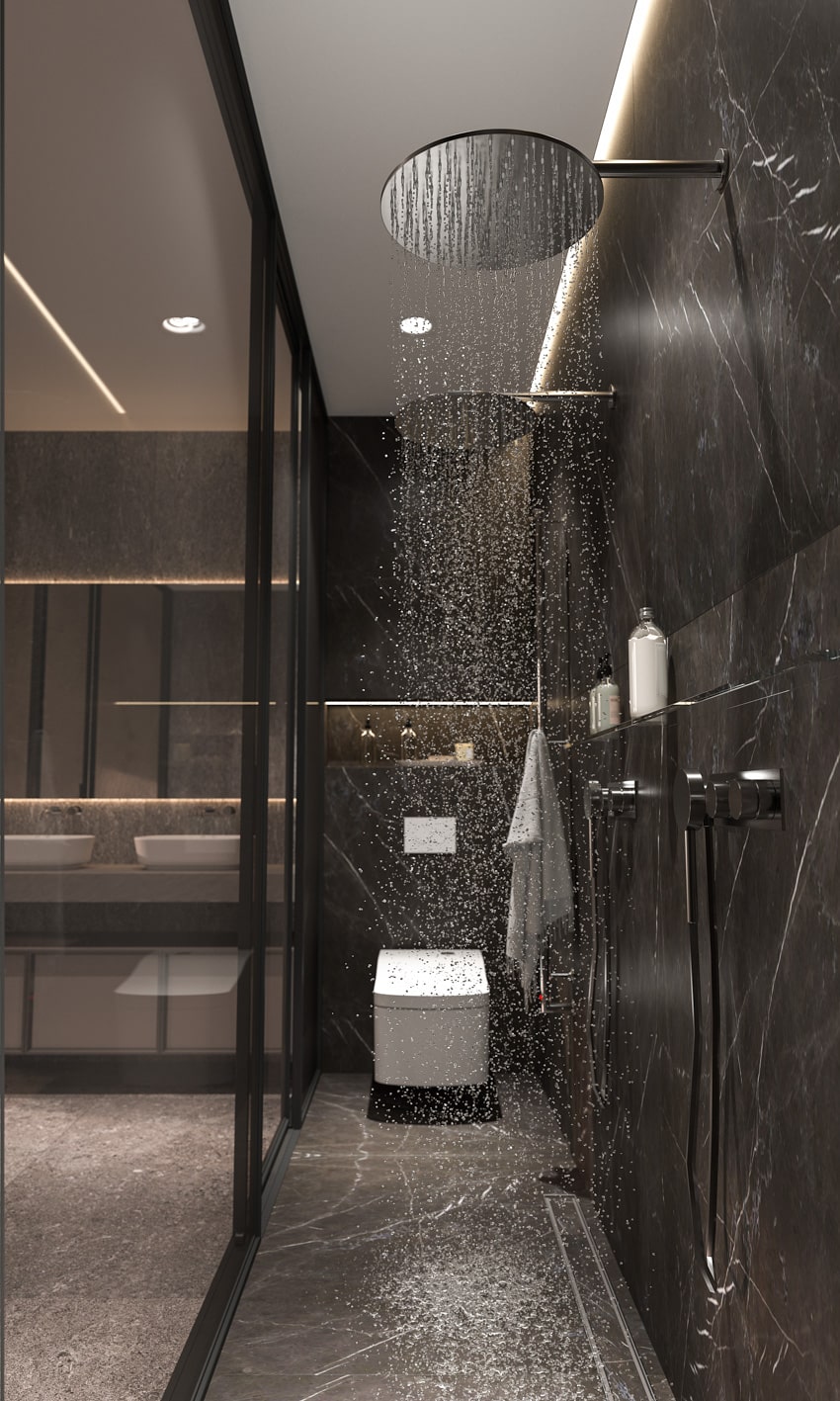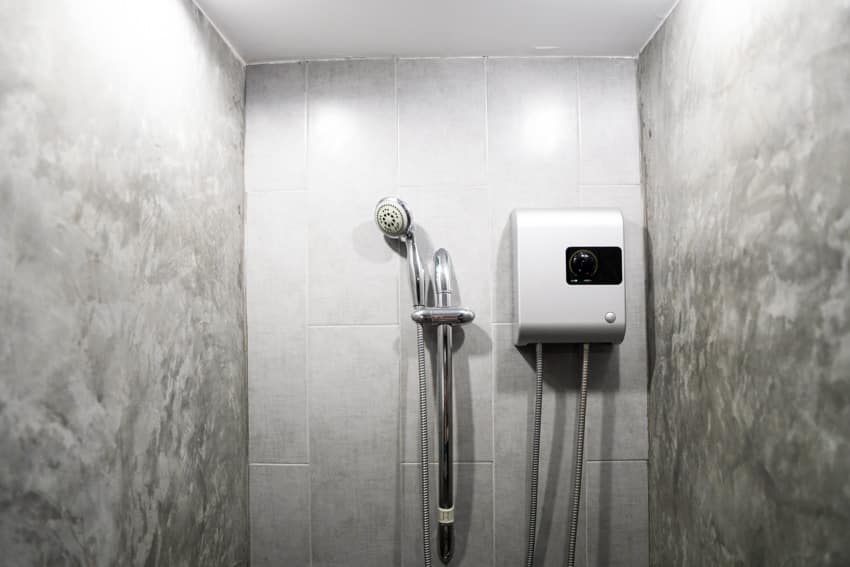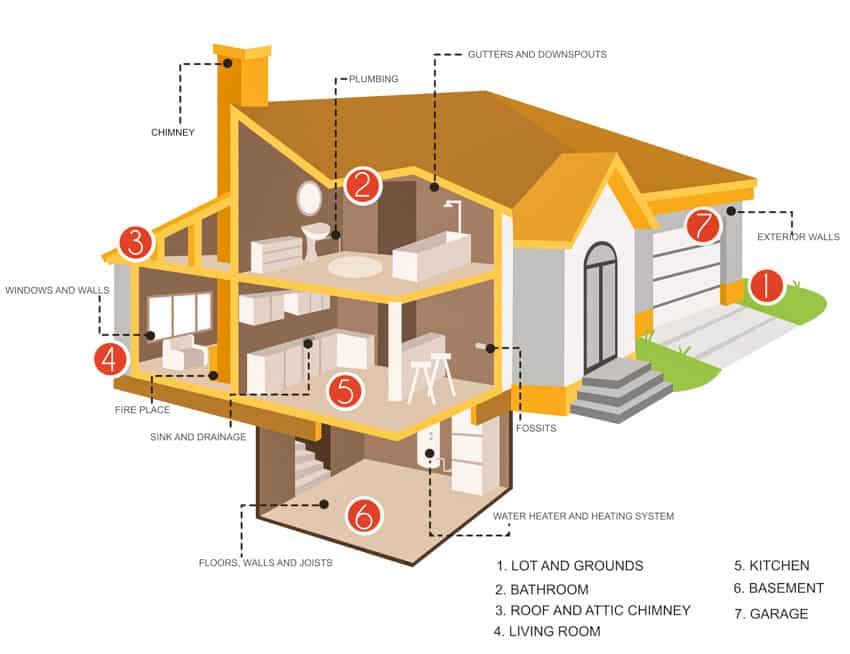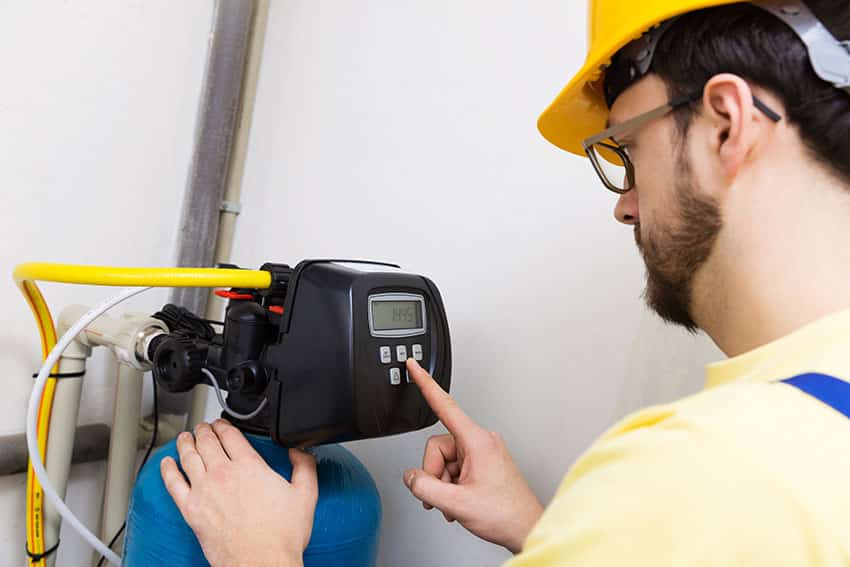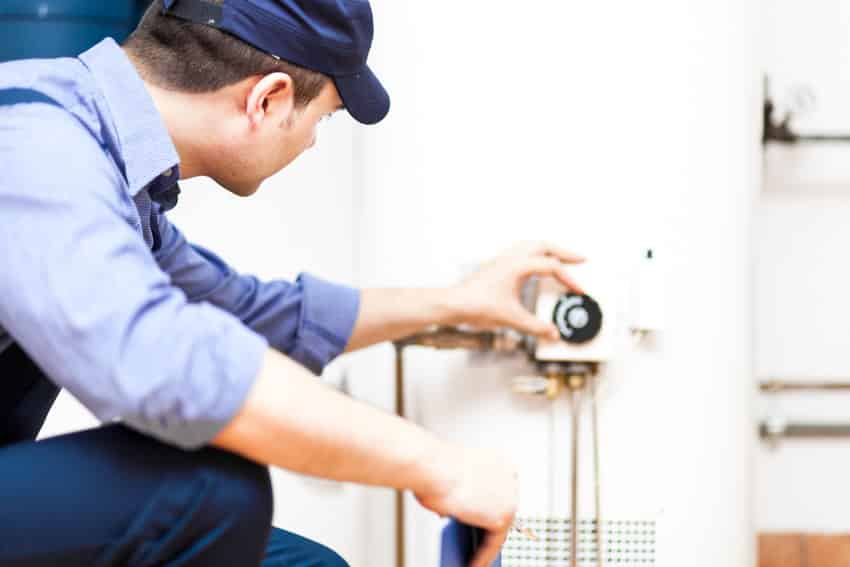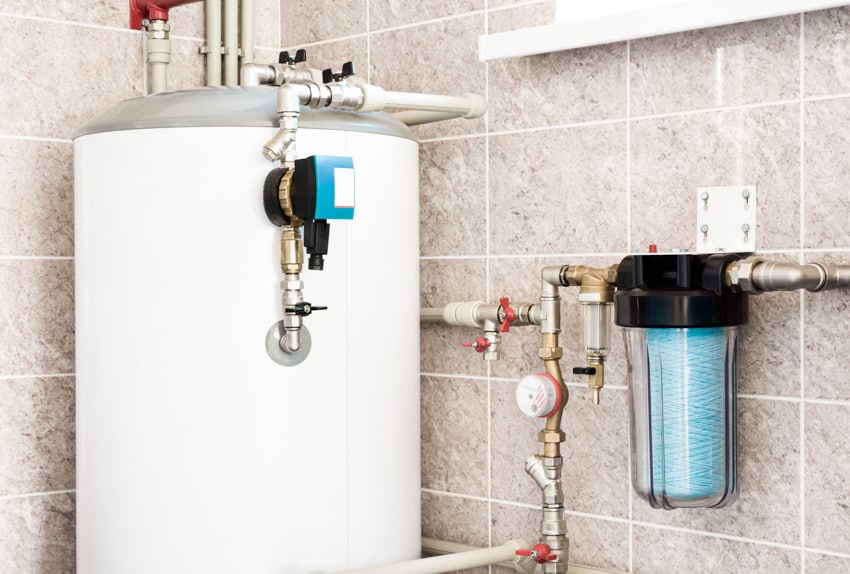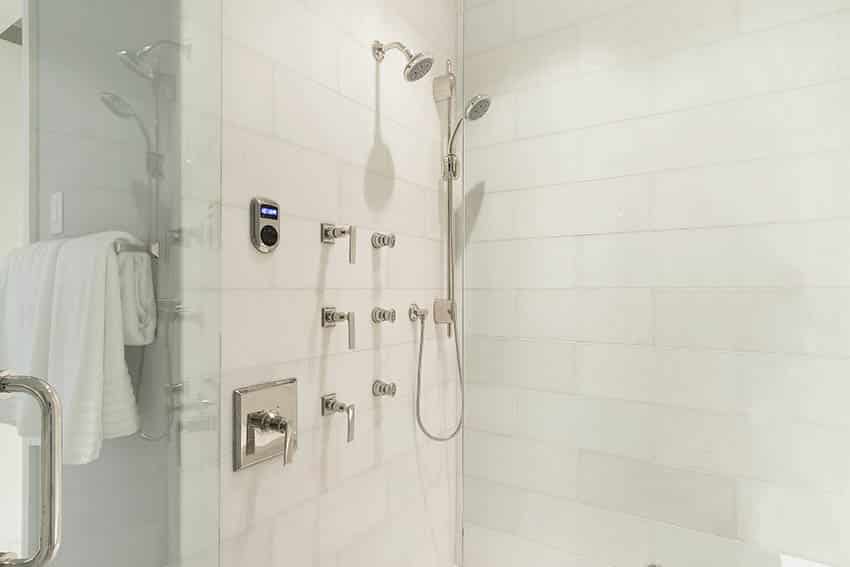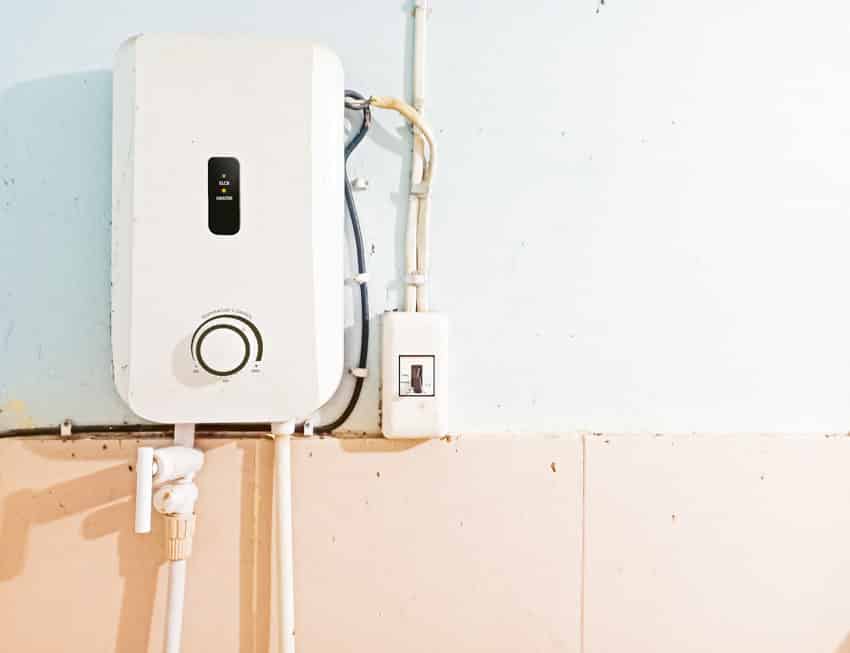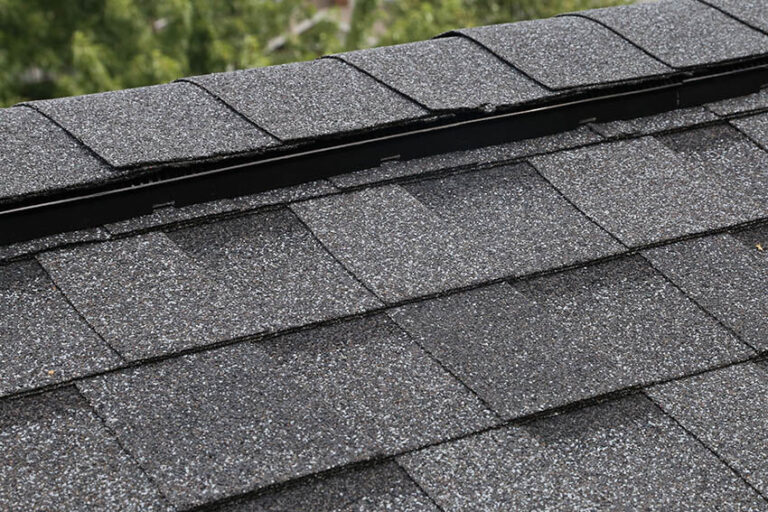Tankless Water Heater Pros And Cons
Here we share our tankless water heater pros and cons guide including what is, how it works, reasons for and against, costs, maintenance tips, and
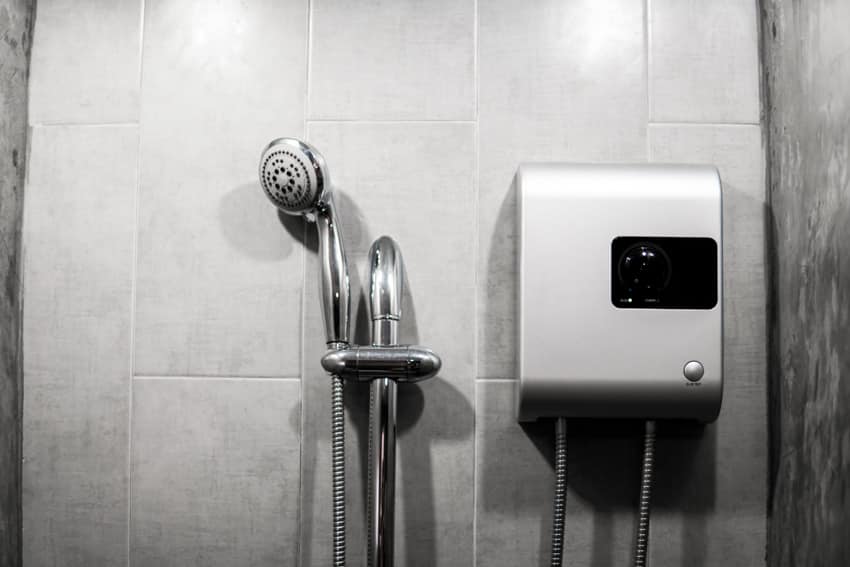
Water heaters are lifesavers, especially during those chilly days wherein water temperatures may be freezing and bathing seems like a necessity but not an option. After a tiring and stressful day, nothing beats coming home to a nice hot shower or bath, either.
You’re probably pretty familiar with the concept of a water heater already but what is a tankless water heater, exactly? This is a somewhat new concept to some. [toc]
What Is A Tankless Style Water Heater?
Basically, as the name suggests, they’re still water heaters. However, a tankless water heater is a type that heats the water up directly and takes much less space.
When you turn the faucet or shower on in its hot setting, cold water flows through a pipe into the unit for the tankless water heater , which is then heated up.
The heating process uses either electricity or a gas burner and then flows right out of the faucet or shower opening. This means that for as long as it’s on, you will constantly have hot water.
The numbers will impress you, actually. An average tankless water heater can provide you with 2 up to 5 gallons of hot water per minute. Gas-fueled water heaters can provide you with a higher rate of flow compared to electric ones.
If you happen to have a huge household and the demand for hot water is high, it isn’t uncommon to have multiple units of tankless water heaters installed to accommodate the need. This ensures on-demand water flow and guarantees that you will never run out of hot water.
How Does A Tankless Design Work
The concept is pretty simple. When you turn the faucet on, water will flow through the tankless heater which will then heat the water up. It’s important to note that you will need to keep the water running until the electric or gas burner heats the water up.
Once hot water starts to come out, it will consistently maintain the temperature until you turn it off.
Tankless Pros
You get hot water instantly. There will be a minute or so wherein you will have to “flush” the cold water out of the pipes but once that is done, a tankless water heater will instantly provide a constant stream of hot water for you.
Your water heating requirements are supplied conveniently and instantly without ever having the hassle of worrying about space-consuming storage tanks.
It has a pretty long lifespan – A tankless water heater will last for about 20 years or more with the proper maintenance with little to no problems whereas standard water heaters, even the high-quality ones, will only work well for about a decade, at most.
This can save you a lot of money on appliances because it means that there would be no need for you to replace your water heater every 10 years or so.
Lower utility costs – Tankless water heaters are known for their efficiency, especially when it comes to the gas or electricity that they consume to keep the hot water flowing. According to Consumer Reports, on average, tankless water heaters have 22% less energy costs to operate than the standard ones.
Although this isn’t an astronomical amount of savings on a monthly basis, when you consider it from an annual perspective, it can easily be in the hundreds or even up to a thousand dollars.
It saves a lot of space – Tankless water heaters are usually just mounted on a wall or in some space in the basement that doesn’t get a lot of attention. The system essentially doesn’t consume as much space as the bulky storage water heater types.
This can work to your advantage if you have a small home and don’t have that much space to spare or if you just don’t like the eyesore. Read more about our guide on the different small bathroom ideas here.
You get tax breaks and financial advantages from using it – Tankless water heaters are efficient because they don’t eat up as much electricity or gas and this is why the government usually encourages the usage of these units by qualifying you for federal tax credits.
Back in as early as the year 2016, the tax credit offered for the purchase and installation of tankless water heaters was already at 10%. That alone is a major game-changer right there.
You get to eliminate “standby loss” when you opt for tankless water heaters. A major downside to standard or traditional water heaters is that “standby water” is reheated repeatedly. This raises gas and electricity costs per reheat.
Even if nobody’s home, a standard water heater will keep reheating the water in its tank and that can rack up on your utility costs. Tankless water heaters don’t do that as they only consume energy or gas when the faucet is turned on.
Your hot water supply never runs out – This is a common problem for standard water heaters especially when there are multiple users in the home. Imagine having the dishwasher running with two people in different bathrooms using hot water at the same time.
Once the water in the tank runs out, so does your supply of hot water. This never happens to tankless water heaters because for as long as the water is running, the heat supply is continued.
They are available in both gas and electric models – You get to opt out of labor and price intensive construction alterations for your tankless water heater installation because whether you have an available connection to a natural gas line or you’d like to tap into your home’s electrical infrastructure, there will always be a model that will work for you.
Tankless water heaters offer longer warranties – As mentioned above, they have twice or more the lifespan of regular water heaters. This goes to follow that they have longer warranties as well.
If there happen to be any issues with your tankless water heater, you will not have to foot the bill for repairs or parts replacements, or even labor. Warranties usually range at around 20 years, which is the average lifespan of a typical tankless water heater.
It can definitely work well for smaller homes – If you don’t happen to have the luxury of having a lot of space in your home and your demand for hot water is fairly minimal, the use of a tankless water heater is the best way to go.
If you only need hot water supply for 1-3 people for bathing, doing the dishes, washing clothes, and so on, a tankless water heater can provide many benefits.
Tankless Cons
Here we share the cons of having a tankless water heater.
Water temperatures might be inconsistent – This is one of the major buyer complaints about tankless water heaters. This issue stems from the said heater’s inability to simultaneously supply hot water to multiple outlets at a certain time.
You should also know that these heaters do not usually turn on if the faucet isn’t opened all the way. This can be an inconvenience when you are doing basic things such as brushing your teeth or shaving because the amount of water coming from a faucet’s full flow can be a little excessive.
A tankless water heater’s initial costs can be significantly higher compared to the traditional ones – A traditional high-quality water heater can cost around $500 whereas the cheapest tankless water heater in the market is double that price. These heaters also require special installation by experienced plumbers, so the added labor costs can factor into its already high price tag.
Your hot water supply is limited – Yes, they do supply a steady stream of hot water for you but this doesn’t mean that it’s unlimited. It can heat 2 to 7 gallons of hot water per minute but this might not be enough if more than one person is using it.
This type of water heater is not equipped to cater to multiple users at the same time. On the other hand, a traditional water heater can store anywhere from 30 to 80 gallons of heated water at once and has no problem catering to multiple users at the same time.
Additional equipment is often needed – You would usually need to pair a tankless water heater with a water softener in order for you to get the best results. This is an extra piece of equipment outside of its already high initial cost.
This extra equipment also negates the tankless water heater’s space-saving advantage as it can be bulky and you would also need extra space to store bags of salt for it.
You would need to reroute gas lines – A tankless water heater’s setup isn’t traditional and this means that installation can be expensive. You might need your contractor to install additional venting or reroute a gas line which can add up to the overall cost of this new addition to your home.
It would take up years in savings for you to make up for its high initial costs – Admittedly, over time, the amount of money you get to save on utility costs will justify the high price for the unit as well as the ensuing installation costs but it can take up to 12 years or more, on average.
By this time, a lot of homeowners have already moved out of their homes or have upgraded or downgraded depending on circumstances.
Added awareness and improved water usage habits with a traditional water heater could save just as much money as going tankless. If you change up your water usage habits, you will get to save up on your utilities costs significantly without ever making the upgrade for this more modern unit.
There’s also the innovation of low-flow plumbing and more efficient washing machines and dishwasher units that could further lessen your water usage.
Going solar is available. Tankless water heaters aren’t the only energy-saving options for your hot water supply needs. Solar water heaters can work just as well and there aren’t any special installation needs for them such as setting up electrical fixtures as well as rerouting natural gas lines.
They can be used in any location and in any climate and once installed, they have no additional cost at all because everything technically comes from the sun from there on out. Read more about our guide on the best ways to add value to your home here.
You might need additional maintenance measures for tankless water heaters – In order for you to keep your warranty going, you would have to maintain annual equipment checkups and have a water softener running. The costs of these additional measures could negate the amount of money you’re saving on utility costs.
There are energy-saving standard water heaters available – These units also offer monthly utility costs savings, have way lower installation costs, and also qualify for federal tax breaks. Also, there aren’t any non-traditional installation requirements to get these installed as almost all homes can accommodate these types of heaters with no modifications needed.
Cost

Ranges can vary slightly depending on the model you choose. This doesn’t include special retrofitting and reconstruction costs. Read more about our guide on renovation vs remodel here.
Tankless Heater Installation Cost
We’re just going to go with the basics. Apart from the actual unit purchased, installation costs can range from $90 to $1,200 or upwards for the labor, depending on the location you’re in.
The optional natural gas line rerouting could run at around $500 and above. A water softener can range from $100 up to as much as $3,000 depending on the softener type; there are water distiller, salt-free, reverse osmosis, magnetic, and ion exchanger units to choose from.
Maintenance
Tankless water heaters have mandatory annual service checkups, whether there’s something wrong with the unit or not.
You would need to do this twice a year if your water heater is always set at a high temperature or if you happen to be in a location that has hard water in supply.
When assessing the tankless water heater pros and cons, its maintenance should be considered as hiring plumbers can be expensive and pricing can vary depending on where you live.
Cleaning
Tankless water heaters require flushing at least once a year. This aims to eliminate calcium buildup as well as other minerals that might accumulate inside the unit.
You need to do this more often if you’re working with hard water. Some units will have an indicator if the unit already needs to be flushed.
What Size Do I Need?
There are 2 things that you would need to figure out before you can come up with a definite answer. First, you need to know what your maximum hot water needs are on a busy day.
Second, you would need a rough estimate of how much hot water you would need per minute to ensure that you never run out. On average, for a typical household, a tankless water heater of 5 to 10 gallons per minute would suffice.
However, if you have more than 3 adults living in the same space, it would be best to go for units that are at 12 gallons per minute or more. This will help you think about the tankless water heater pros and cons.
Electric Vs. Gas
To be honest, this isn’t really a luxury most homeowners get to have. Not all homes have access to natural gas. If that happens to be the case, an electric water heater would be your best bet.
There is another way around it though, you can opt for a tankless water heater that operates on propane gas. Gas-type tankless water heaters bring in more savings on monthly utility costs compared to electric ones.
However, they can cost more upfront. If you’re willing to wait it out for a year or so though, gas-type tankless water heaters will recover the price difference in the upfront costs for you. Hence, you get to save more money from there on out after considering the tankless water heater pros and cons.
What Is The Downside Of A Tankless System
A tankless water heater is way more expensive upfront and has special installation needs and these too come with additional costs. They require more maintenance as they have mandatory annual or bi-annual checkups and flushing to maintain the warranty.
They also don’t work well for large households or households that would have multiple users in need of hot water at the same time. This is important when considering the tankless water heater pros and cons.
Is A Tankless Device Worth It
If your finances can take on the load of the expensively priced tankless water heater, then, in conclusion, these tankless water heater pros and cons can be worth it. Sure, there may be special installation needs and maintenance required, and so on.
However, in the grand scheme of things, and considering its impact on the environment in the long run and if you don’t see yourself house-hopping in the foreseeable future, then you should definitely consider the investment. See more related content at our article about the different types of bathroom showers on this page.


